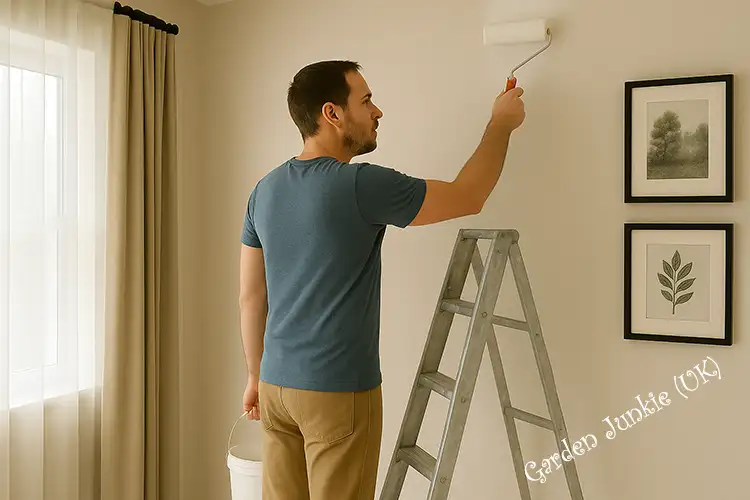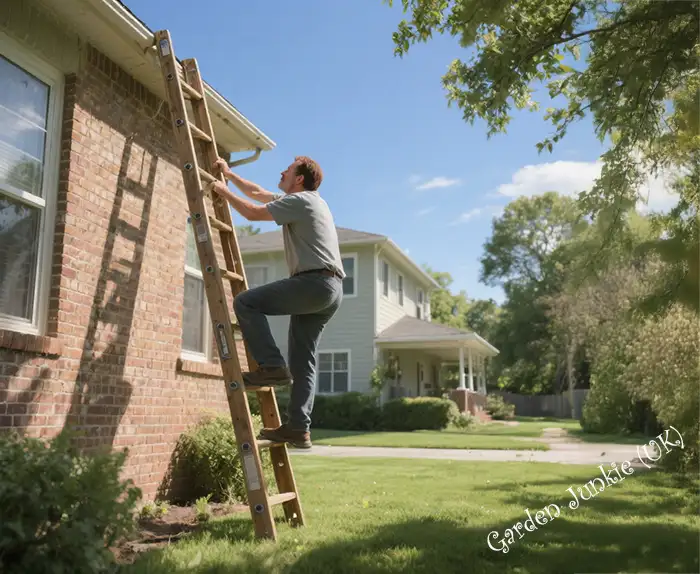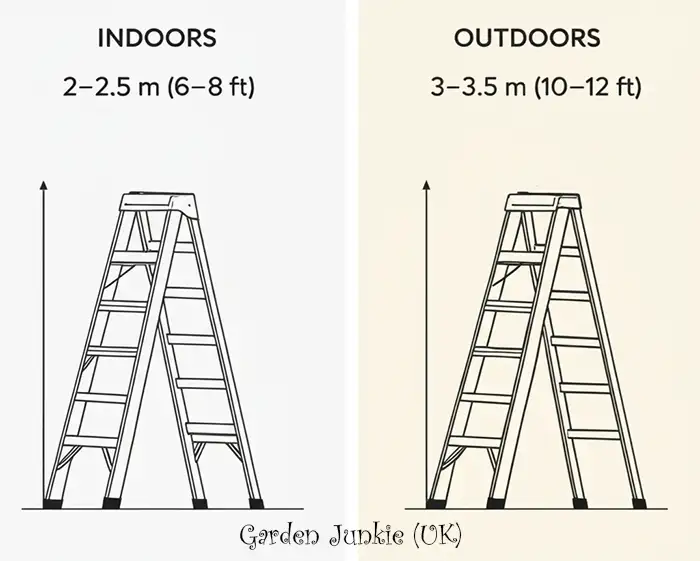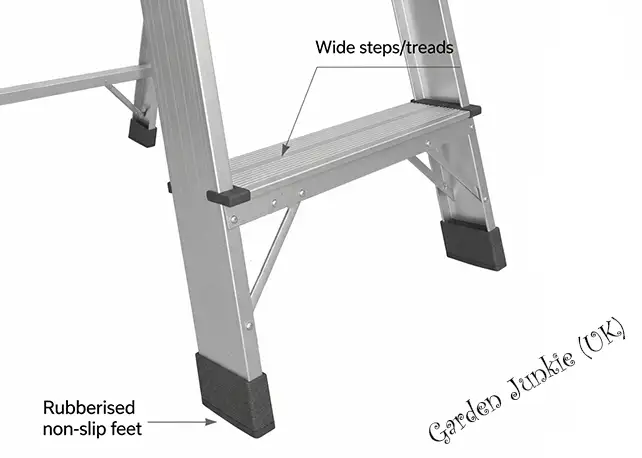Beautiful Plants For Your Interior
Step Ladders: A Complete UK Guide for Safe and Smart Climbing

Step ladders are essential in almost every British household or workspace. From changing light bulbs and hanging curtains to more demanding tasks like decorating or maintenance, they offer a safe and stable way to reach those higher places without the risks of overreaching or unstable furniture.
Many tasks around the home or garden simply can’t be done safely without a step ladder. Unlike leaning ladders, a step ladder is self-supporting and can be used without needing a wall or similar for support. This makes it ideal for flexible use indoors and outdoors, whether you’re trimming hedges or putting up shelves.
Choosing the right step ladder involves more than just height. The material it’s made from, how stable it is, and whether it suits your environment and tasks are all just as important.
Exploring Different Types of Step Ladders

Step Ladders: With a step ladder, leaning ladders are not often required as you do not require to ‘prop’ step ladders against anything to climb them.
Aluminium step ladders are a popular choice in the UK due to their lightweight nature and resistance to rust. They’re easy to carry, store, and manoeuvre, which makes them perfect for general household indoor and outdoor tasks such as painting or maintenance work.
Fibreglass step ladders are a better option when working on or near electricity, as they do not conduct current. They are more robust and heavier than aluminium models, making them ideal for electricians and tradespeople who need added safety.
Heavy-duty step ladders are designed for more industrial or demanding tasks. These models are often made from reinforced aluminium or fibreglass and offer increased weight capacity and greater stability. They’re commonly used in construction, workshops, and by trades requiring heavy tools.
Swingback step ladders offer dual-side access, which makes them very convenient for quick, repetitive tasks. They’re compact and easy to store, and the dual-side feature is especially handy in tight spaces or trade environments.
Choosing the Right Material for the Job

Step Ladders: Step Ladders come in various models and made from different materials based on user preferences.
The material of a step ladder directly influences how and where you can use it. Aluminium is lightweight, resistant to corrosion, and perfect for frequent indoor or outdoor use. However, it’s conductive, so it shouldn’t be used near electrical sources.
Steel ladders are also conductive but are very strong and much heavier, and they can rust over time if not cared for properly. These are more commonly used in commercial or garage settings.
Wooden step ladders are less common today but still valued for their sturdy build and traditional look. They are usually heavier and require more maintenance to avoid issues with damp or splitting but can be a good choice for indoor decorative work where appearance matters.
Fibreglass is the most versatile and safest option for environments involving electrical equipment. It is strong, durable, and non-conductive, making it ideal for electricians and maintenance workers in both domestic and commercial settings.
Selecting the Right Size Step Ladder

Step Ladders: Ensure you pick the right ‘height’ step ladder for your use.
When choosing a step ladder, it’s important to measure the height you need to reach rather than just the ladder itself. For most indoor household jobs, a ladder between 2 – 2.5m (6 – 8 ft) high is usually sufficient. Outdoor tasks, such as hedge trimming or exterior painting, often require taller ladders in the 3 – 3.5m (10 to 12ft).
It’s worth remembering that you should never stand on the top step of a step ladder unless it has a platform or is designed for it. UK safety guidelines recommend standing no higher than the third step from the top. Overreaching is one of the most common causes of falls, so choosing a ladder tall enough for your needs is essential.
Safety Features to Look For
Ladder safety is critical, especially in home environments where hazards are often overlooked. Always look for features such as rubberised, non-slip feet which keep the ladder secure on various surfaces. Wide steps or treads can improve stability and comfort, particularly when standing for extended periods.
Many step ladders in the UK now come with locking hinges or stabilisers, which ensure they don’t shift during use. Handrails are another useful addition, especially for older users or those working at height. UK regulation EN131 and or CE standards are key standards to look for, they it indicate the ladder has been tested and certified for domestic or professional use.
How Step Ladders Fit Everyday Life
Step ladders are incredibly versatile tools, found in everything from kitchens and garages to warehouses and workshops. In a home setting, they’re often used for painting, hanging curtains, or reaching top shelves. Because they are self-supporting and foldable, they don’t take up much space and are simple to store.
For decorating and DIY tasks, lightweight aluminium models are easy to carry from room to room. In professional environments like construction or electrical work, more robust ladders with fibreglass frames or wide platforms are often used to ensure comfort and safety over longer periods.
Looking After Your Step Ladder
Step ladders, like any tool, require regular care to keep them safe. Before each use, it’s important to inspect the ladder for cracks, loose rivets, or signs of wear, particularly if it’s kept in a shed or garage where damp may affect its condition.
Wiping it down after use, especially if it’s come into contact with paint, grease, or debris, will help maintain traction and appearance. When storing your ladder, keep it in a dry, upright position to avoid warping or rust. Avoid leaving it exposed to the elements for prolonged periods unless it’s designed for outdoor durability.

Step Ladders: Look for good ‘safety’ features when buying a step ladders for either indoors or outdoor use.
Enhancing Performance with Accessories
Accessories can greatly increase the practicality and comfort of a step ladder. Tool trays, for example, attach to the top of the ladder and keep your tools or materials within easy reach, saving you from repeated trips up and down. Some ladders include built-in trays, but separate accessories are available.
Work platforms offer a wider standing surface and are especially useful when the job requires stability and freedom of movement. Ladder levellers and stabilisers can also help when working on uneven ground, adding peace of mind and safety during tricky tasks.
Choosing a Reliable Brand in the UK
In the UK, brands like Werner, Youngman, and Little Giant are widely trusted and readily available through major retailers, and online. These manufacturers offer products that comply with UK/EU safety standards and come with warranties that reflect their durability and build quality.
When browsing options online, take time to check the EN131/CE certifications, product reviews from other UK buyers, and whether the ladder includes features that match your intended use, such as platforms, tool holders, or handrails. Many quality ladders come with warranties of one year or more, which adds reassurance for regular users.
Conclusion
A good step ladder is one of the most practical tools you can own. From simple household tasks to professional-level jobs, the right ladder enhances safety and efficiency. Whether you choose a lightweight aluminium model for everyday home use or a heavy-duty fibreglass version for work, always prioritise stability, safety, and quality.
Before any purchase, explore the latest UK/CE certified models and accessories to find a step ladder that fits your needs and budget.
FAQ’s
Are step ladders safe to use?
Step ladders are safe when used correctly and inspected beforehand. UK Health and Safety Executive (HSE) guidance emphasises that ladders should only be used for low-risk, short-duration tasks and with proper stability checks. Always check treads, feet, locking mechanisms, ensure it’s fully opened on level ground, and avoid any damage before climbing.
Can I stand on the top rung of a step ladder?
You should never stand on the top one to three rungs of a swing back step ladder unless it has a designated platform. Over-reaching is one of the most common causes of falls. Stay below the safe climbing height—usually no higher than the third step from the top.
What’s the ideal ladder height for UK household tasks?
Most indoor UK jobs can be handled with a 6–8 ft ladder, while exterior tasks like gutter cleaning or hedge trimming typically require 10–12 ft ladders. The general rule is to choose a ladder tall enough that you don’t need to stand near the top, as advised by UK ladder brands .
Should I use an aluminium or fibreglass ladder?
Aluminium ladders are lightweight, corrosion-resistant, and ideal for general home use. However, they conduct electricity and should never be used near live circuits. Fibreglass ladders are non-conductive, durable, and preferred by electricians and tradespeople working around power sources.
What UK regulations apply to using step ladders?
Under the UK Work at Height Regulations 2005, step ladders can be used for low-risk, short-duration tasks (typically under 30 minutes), but only after a proper risk assessment. Ladders must comply with the BS EN 131 standard, and employers or users must ensure they’re maintained, inspected by a competent person, and used in safe conditions.
